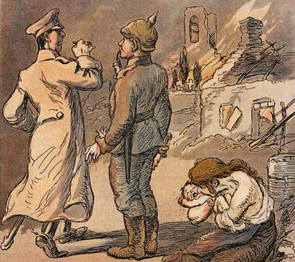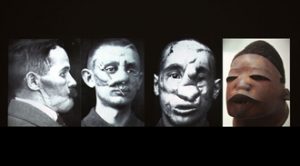Annette Becker is known for her fine knowledge of wars and genocides. She is now studying the conditions under which they are being exhibited in museums that have preserved traces thereof. Such museums have become sites of both commemoration and mourning. Especially since the 1990s, a bit everywhere in the world and there, too, ...
Arts & Sociétés
Letter of Seminar
Wars and Peace 2013-2014
-
-
# 66 | Nineteenth Century Wars at a Distance | Sylvain Venayre
Historians, we are told by Sylvain Venayre, the author of La Gloire de l’aventure. Genèse d’une mystique moderne. 1850-1940, neglected nineteenth-century European wars. Those wars are eclipsed by the great deadly conflicts of the twentieth century. The preceding century was said to be, by comparison, almost peaceful. Now, nothing of the sort is actually ...
-
# 65 | The Great War of Images | Nicholas-Henri Zmelty
Nicholas-Henri Zmelty defended a noted thesis (winner of the Orsay Museum Prize) on France’s ca. 1900 poster craze. Here, he looks at the mass-circulation illustrated press in France, investigating its strong links with prewar culture from the standpoint of heroic, erotic, and humorous representations. Laurence Bertrand Dorléac Between 1914 and 1918, the French illustrated ...
-
# 62 | Freud and War | Françoise Coblence
Freud was in a bellicose state of mind for just two weeks at the start of the Great War of 1914-1918. Very quickly thereafter, he began to devote himself to an attempt at understanding, doing so in an all the more singular way as he found himself faced with a radically unprecedented situation. The ...
-
# 61 | Rwanda | Nathan Réra
The staging of photographs is a practice that has always existed. As early as the American Civil War, Alexander Gardner and Timothy O’Sullivan, it is known, certainly moved corpses around in order to render their compositions more “striking,” just as they also reported their models to be “Yankee” or “Confederate” so as to suit ...
-
# 60 | Pillages and Restitutions | Bénédicte Savoy
Through her fundamental work on the despoliation of artworks, Bénédicte Savoy reminds us that this has been an issue of importance for people’s memories since the time of Antiquity. In fact, it already was such an issue in Aeschylus’ Agamemnon. In the present text, Savoy brings out for us the recurring motifs in debates ...
-
# 58 | Conjuring away War | Frédérique Goerig-Hergott
“I didn’t paint war scenes in order to prevent war; never would I have had that pretension,” Otto Dix told Otto Wundshammer in 1946. “I painted them in order to conjure war away. All art is conjuration.” In evaluating his own work more than twenty years after the Great War of 1914-1918, Dix subscribed to ...
-
# 57 | Guardroom | Léonard Pouy
There was a time when war was so loved and considered so normal that history itself was thought to be made up especially of military battles, conquests, and heroism. That was the way it was in the seventeenth-century Netherlands, when the Dutch were victorious over the Spanish occupiers in 1648. Within a Reformation atmosphere, ...
-
# 54 | On French Colonialism | Nicolas Schaub
Between 1830 and 1870, at the time of the French colonial conquest of Algeria, more and more representations appeared. Yet, with few exceptions, these representations camouflaged the sufferings on both sides, and hardly anyone but Tony Johannot directly evoked the brutality of colonization. Johannot fixed in place the image of the “smoke out” from ...






